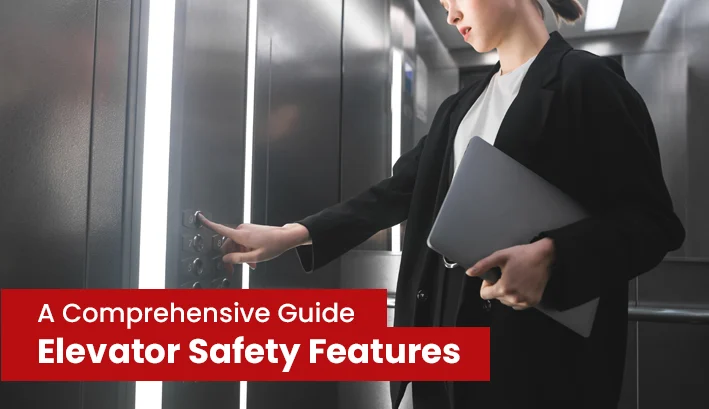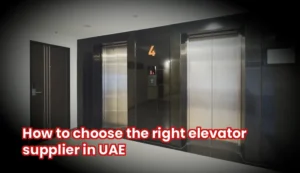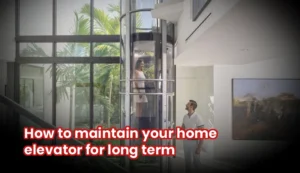Elevator Safety Features: What You Need to Know
Elevators make our daily lives easier, helping us move between floors easily. But have you ever stopped to think about how they ensure our safety?
Choosing, installing, and maintaining an elevator involves a lot that goes into keeping elevators safe for everyone.
Here is What You Will Get After Reading This Blog:
Table of Contents
Toggle
Let’s explore these points to understand how elevators keep us safe and what you can do to ensure they continue to do so.
Why Do Elevators Need Safety Features?
Elevators are not just about going up and down; they must be safe for everyone using them. This is why looking into elevator safety features is a must:
Preventing Accidents
We have all seen situations where elevator doors start closing while someone is still stepping in. Without sensors to detect movement, this could lead to serious injuries.
Scary, right?
Safety features like door sensors prevent such incidents by detecting anything in the doorway and stopping the doors from closing.
Similarly, brakes ensure the elevator operates smoothly, avoiding sudden stops or drops. These features create a secure experience for everyone, from young children to the elderly, making elevators safe to use every day.
Providing Peace of Mind
Have you ever been stuck in an elevator during a power outage? If not, there are many who have experienced this, unsure of what to do in the dark. Backup power ensures this doesn’t happen, keeping the elevator running smoothly even in emergencies.
Similarly, emergency alarms and intercom systems add another layer of security, allowing passengers to call for help with just the press of a button.
These features provide reassurance and make people feel confident and safe while using elevators.
Compliance with Regulations
Elevators are built to keep you safe, and this is possible because they follow strict safety rules set by experts. These regulations ensure that every elevator is designed, installed, and maintained to meet high safety and reliability standards.
By following these guidelines, elevators provide a secure and worry-free experience for everyone who uses them.
Important Safety Features to Look for Before Purchasing
Modern elevators have advanced features that keep everyone safe and make using them easier. Consider the following features before purchasing:
Emergency Brakes
If an elevator suddenly started moving too fast—it would feel scary and dangerous. Emergency brakes are built to stop the elevator immediately if this happens.
They ensure the elevator doesn’t lose control and protect passengers from accidents during unexpected situations.
Door Sensors
Have you ever walked toward an elevator only to have the doors start closing unexpectedly? Without sensors, these doors would lack the capability to recognize your presence, which poses a real risk of closing on you.
Door sensors detect if someone or something is in the way and stop the doors from shutting until it’s clear. This feature is especially helpful for kids, elderly people, or those with mobility challenges.
Overload Alarms
Every elevator has a weight limit; it can only carry a certain number of passengers. If the elevator gets overloaded, it could damage the system or stop working.
Overload alarms beep loudly to warn users when the weight inside is too much. This helps protect the elevator and ensures everyone stays safe.
Backup Power
Being in an elevator during a power outage can be quite disturbing. It would be dark, and the elevator might stop between floors.
Backup power ensures the elevator works even if the main power goes out. It prevents passengers from getting stuck and makes the ride safe and smooth, no matter what happens.
Interlock Systems
Elevators should only move when the doors are completely closed. Interlock systems make sure this happens. If the doors are even slightly open, the elevator won’t start moving.
This extra layer of protection ensures that passengers are safe, and nothing gets caught between the doors.
These safety features are essential to make sure elevators are reliable, secure, and comfortable for everyone who uses them. They provide peace of mind and help prevent accidents, making them a must-have for any building.
How to Keep Elevators Running Smoothly and Safely?
Taking care of elevators is easier and cheaper than dealing with big breakdowns later. Make sure your elevators operate smoothly and safely by following these practices:
Regular Inspections
Just like how we go for regular health check-ups, elevators need professional check-ups too. Experts inspect the important parts like cables, brakes, and buttons to make sure everything is working properly.
These inspections help catch small issues early before they turn into major problems that could stop the elevator from working altogether.
Fix Small Problems Quickly
If you hear strange noises or notice doors closing too slowly, don’t ignore them. These small signs mean something might not be working right.
If we ignore them, the problem can grow bigger and more expensive to fix. For example, a loose part or a slow door should be fixed immediately to avoid accidents or breakdowns.
Teach Proper Usage
Elevators last longer and work better when people use them the right way. Overloading an elevator with too many people or pushing buttons too hard can damage the system.
Teaching users to respect weight limits, press buttons gently, and avoid forcing doors helps keep elevators in good condition for everyone.
Everyday Tips for Safe Elevator Use
- Don’t Overload: Avoid exceeding the elevator’s weight limit, as this strains the system and can lead to breakdowns.
- Handle With Care: Be gentle with buttons and doors to prevent damage to sensitive components.
- Follow Warning Signs: Never use an elevator marked “Out of Order.” Wait for repairs to ensure safety.
- Report Issues Immediately: If you notice unusual noises or slow operation, inform building management right away to prevent bigger problems.
- Avoid Blocking Doors: Holding doors open for too long can strain the sensors and mechanism, causing unnecessary wear and tear.
- Encourage Responsible Use: Remind users, especially children, not to jump inside the elevator or tamper with controls.
By following these steps, you can ensure elevators remain safe, reliable, and efficient for everyone.
Essential Safety Checks for Elevator Installation and Operation
Proper installation and regular safety checks are critical for ensuring elevators remain safe and reliable.
Safety Checks During Installation
The foundation of elevator safety begins with proper installation. Follow these steps:
Certified Installers
- Always hire trained professionals who understand safety regulations.
- Certified installers ensure that all technical aspects are handled properly and meet safety standards.
Compliance with Standards
- Verify that the elevator complies with local safety codes such as EIAC, HSE, and Sharjah Municipality regulations.
- Compliance guarantees the elevator is legally approved and safe for use.
Functional Testing
- Test all safety features, including emergency brakes, alarms, and door sensors, before using the elevator.
- This ensures everything works as intended.
Load Testing
- Conduct a load test to confirm that the elevator can handle its maximum capacity safely.
- This step is crucial for performance and safety.
Proper Documentation
- Ensure all installation documents, including safety approvals and warranties, are provided.
- These documents are essential for future maintenance and inspections.
How to Check If an Elevator Is Safe After Installation
Once the elevator is operational, regular checks help maintain safety and performance:
Look for Certificates:
- Safety certificates from experts should be displayed inside the elevator, confirming it meets safety standards.
Observe Movement
- Pay attention to how the elevator moves. If it jerks, stops abruptly, or makes strange noises, it may need servicing.
Ask for Maintenance Records
- Check if the building manager keeps updated records of inspections and repairs to confirm regular maintenance is performed.
Test Emergency Features
- Periodically check emergency systems like alarms, intercoms, and backup power to ensure they work properly in emergencies.
Inspect Cleanliness and Lighting
- A clean and well-lit elevator indicates regular maintenance. Dirt or poor lighting can signal neglect and may lead to safety risks.
Elevators make our lives easier, but their safety cannot be overlooked. By investing in advanced features, ensuring proper installation, performing regular maintenance, and following safety guidelines, we can keep everyone safe.
Next time you step into an elevator, remember the systems in place working tirelessly to protect you! To learn more about reliable and safe elevator solutions, visit the best lift supplier in UAE at Alfa Elevators.



